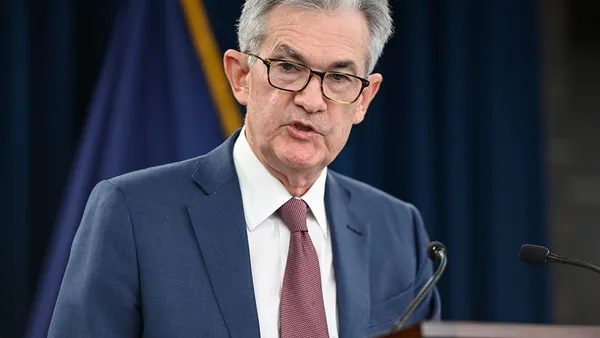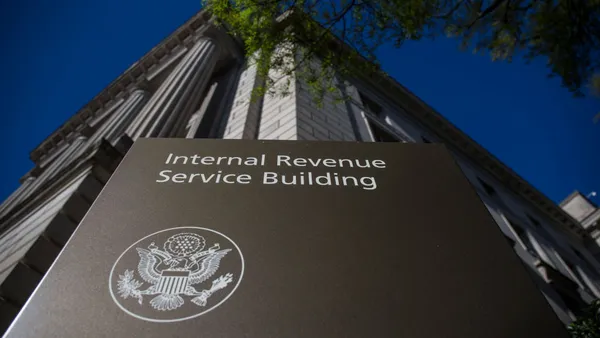Dive Brief:
- The U.S. services sector expanded at its slowest rate since May 2020 as companies struggle with inflation and a tight labor market, according to a survey by the Institute for Supply Management (ISM) released Thursday.
- Prompted by a decline in business activity, orders and employment, the ISM’s monthly non-manufacturing PMI dropped from 56.7 in September to 54.4 in October — the lowest level in two years, ISM said.
- “There are still challenges in hiring qualified workers, and due to uncertainty regarding economic conditions, some companies are holding off on back-filling open positions,” Anthony Nieves, Chair for the ISM Service Business Survey Committee, said in a statement. “Supply chain and logistical issues persist but are not as encumbering as they were earlier in the year.”
Dive Insight:
Business and delivery activity as well as new orders slowed during October, with ISM’s Business Activity Index slumping to 55.7, a 3.4 point decline from 59.1 in September. A reading above 50 typically indicates expansion, according to ISM.
New orders slowed to 56.5 in October from 60.6 in September. Meanwhile, the ISM’s price index rose by two points last month after five months of decreases.
Inventories contracted for the fifth consecutive month, the ISM said, as supply chain challenges complicate efforts by service businesses to access materials and refill their stocks.
The slowdown in the services sector comes as the Federal Reserve tightens interest rates in an effort to clamp down on inflation. After a two day meeting on Wednesday, the Fed raised the benchmark interest rate by 0.75 percentage point for the fourth time in as many gatherings.
The central bank over time may raise the federal funds rate more than policymakers projected in prior forecasts, although it will likely consider increases less than 0.75 percentage point at its scheduled meetings in December and February, Fed Chair Jerome Powell said.
Policymakers have repeatedly said in recent months that they plan to continue raising borrowing costs until they see signs of a sustained decline in inflation. They have cited the red hot labor market as a leading cause of high price pressures.
Nonfarm payrolls grew 261,000 in October, more than expected. The increase bolstered odds that the Fed will further withdraw stimulus during its next meeting. The unemployment rate rose slightly to 3.7%, with 6.1 million individuals looking for work.
The number of job seekers falls far short of the number of available jobs, a gap that explains why employers consider talent shortages a top risk. The number of job openings rose to 10.7 million in September, according to Nov. 1 data from the Labor Department.












